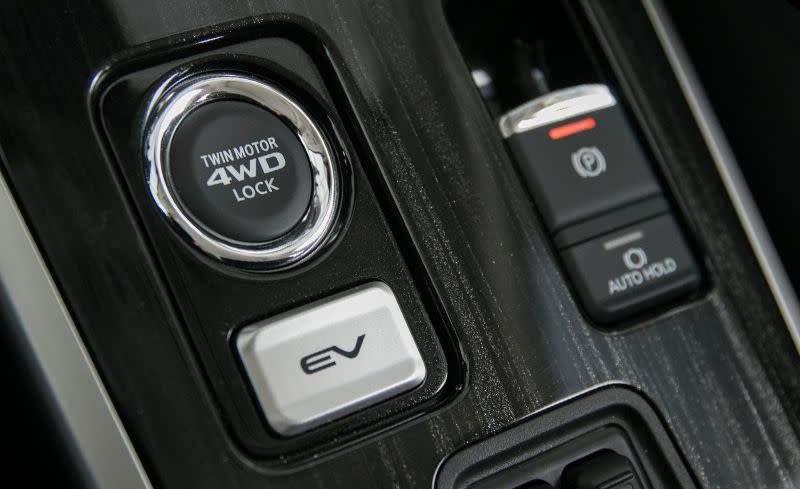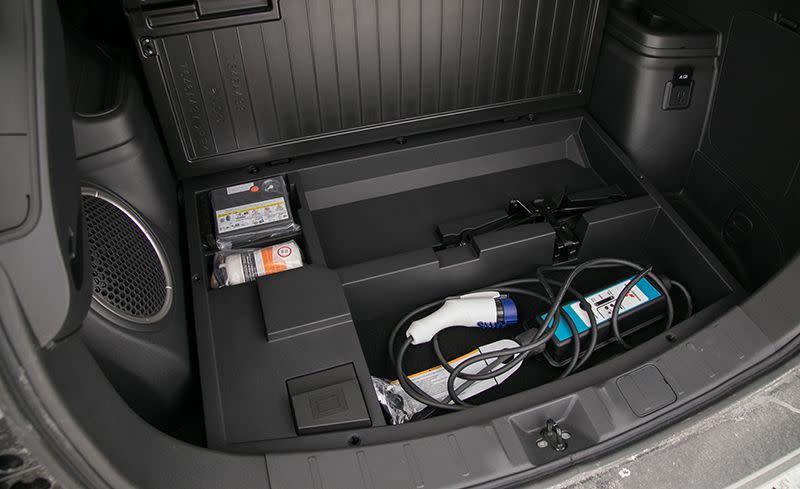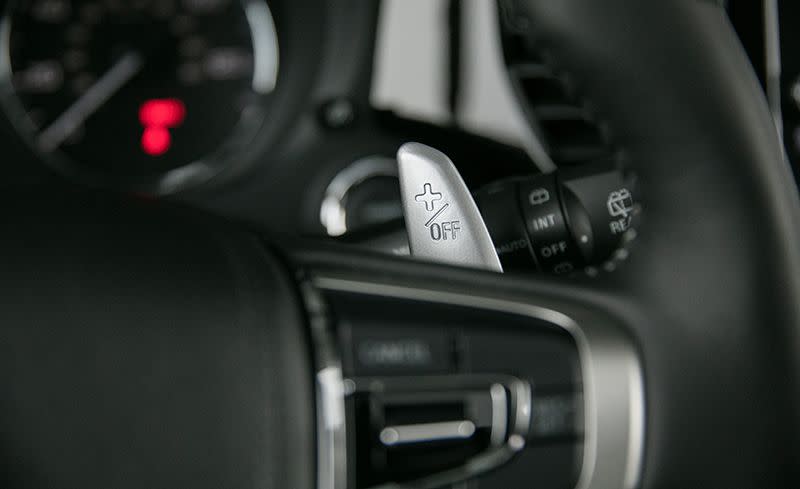Powertrain and Charging
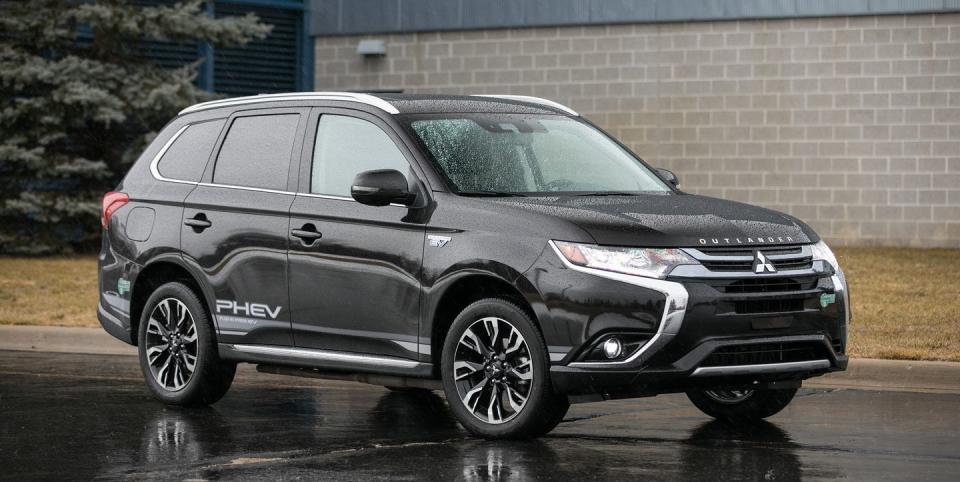
Powertrain and Charging Rating:

With three powertrains that include a class-exclusive PHEV (plug-in hybrid electric vehicle) model, the Outlander has something for almost everyone-unless zippy acceleration and engine refinement are important, that is. The V-6 boasts substantial towing ability, and the PHEV features a state-of-the-art hybrid system that utilizes Level 3 fast charging.
The base 166-hp 2.4-liter inline-four syncs to a continuously variable automatic transmission (CVT) with either front- or all-wheel drive. The last version we tested was unimpressive, with lethargic performance-zero to 60 mph in 9.3 seconds-and an apathetic CVT that lets the rpm soar and the engine moan. However, it undercuts the V-6 and PHEV models by several thousand dollars, which does increase its appeal somewhat. The 224-hp V-6 and six-speed automatic pair exclusively with Super All-Wheel Control (S-AWC) all-wheel drive, which is optional with the four-cylinder. The system uses a limited-slip front differential and other torque-vectoring techniques to optimize traction and cornering capabilities. While the V-6 we tested had prominent acceleration versus this competitive set, the engine was audibly gruff under load, and the transmission was sluggish.
The PHEV features a 2.0-liter inline-four and two electric motors-one up front and one at the rear for all-wheel-drive traction-with a combined 197 horsepower. The gas engine primarily powers a 70-kW generator that charges the 12.0-kWh battery, but it also supplements thrust when necessary. During our most recent test, the PHEV’s system felt more responsive than many plug-in hybrids. This was satisfying around town and helped offset its slow acceleration times. Too bad the gas engine was loud and uneven when turning on and off to charge the battery.
Test Results: Acceleration
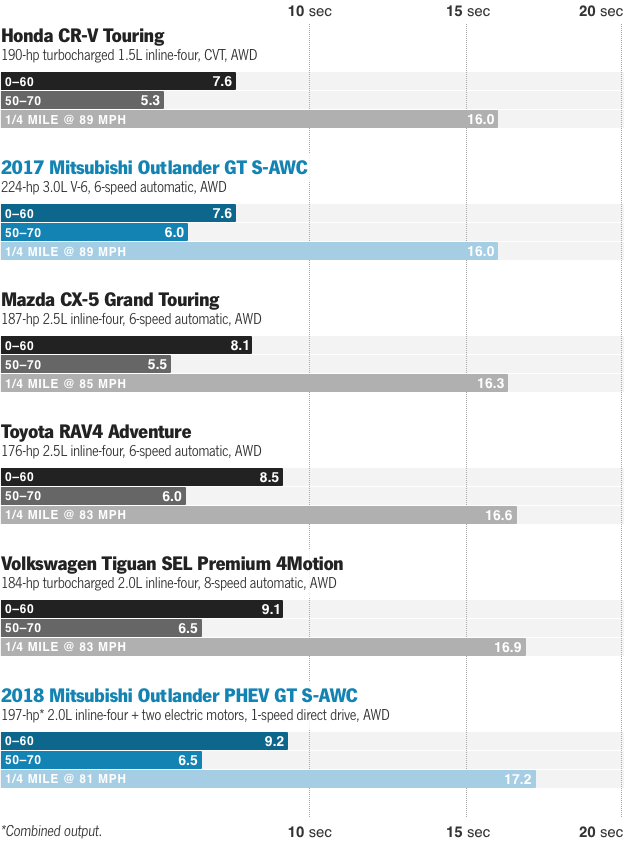
Charging System
The Outlander PHEV can charge at either a 120-volt (Level 1) or a 240-volt (Level 2) outlet. A full charge requires eight hours on standard 120-volt house current but less than four hours on 240 volts. Unlike other plug-in hybrids on the market, the Outlander also features Level 3 fast charging. At Level 3 charging stations-typically found at shopping centers-users can recharge the battery up to 80 percent in 25 minutes. The PHEV can also self-charge in Battery Charge mode, which uses the engine-powered generator to reenergize the battery.
Manual Shifting Capability
Normally, column-mounted paddle shifters are reserved for high-performance cars such as the Alfa Romeo Giulia Quadrifoglio. The Outlander GT also has them, but they feel cheap, and the transmission responds lazily to inputs.

Automatic Stop/Start

Tow Ratings Compared
While most Outlanders can only tow up to 1500 pounds, the V-6 version can handle up to 3500. That’s more than most compact crossovers can handle.

You Might Also Like

 Yahoo Autos
Yahoo Autos 